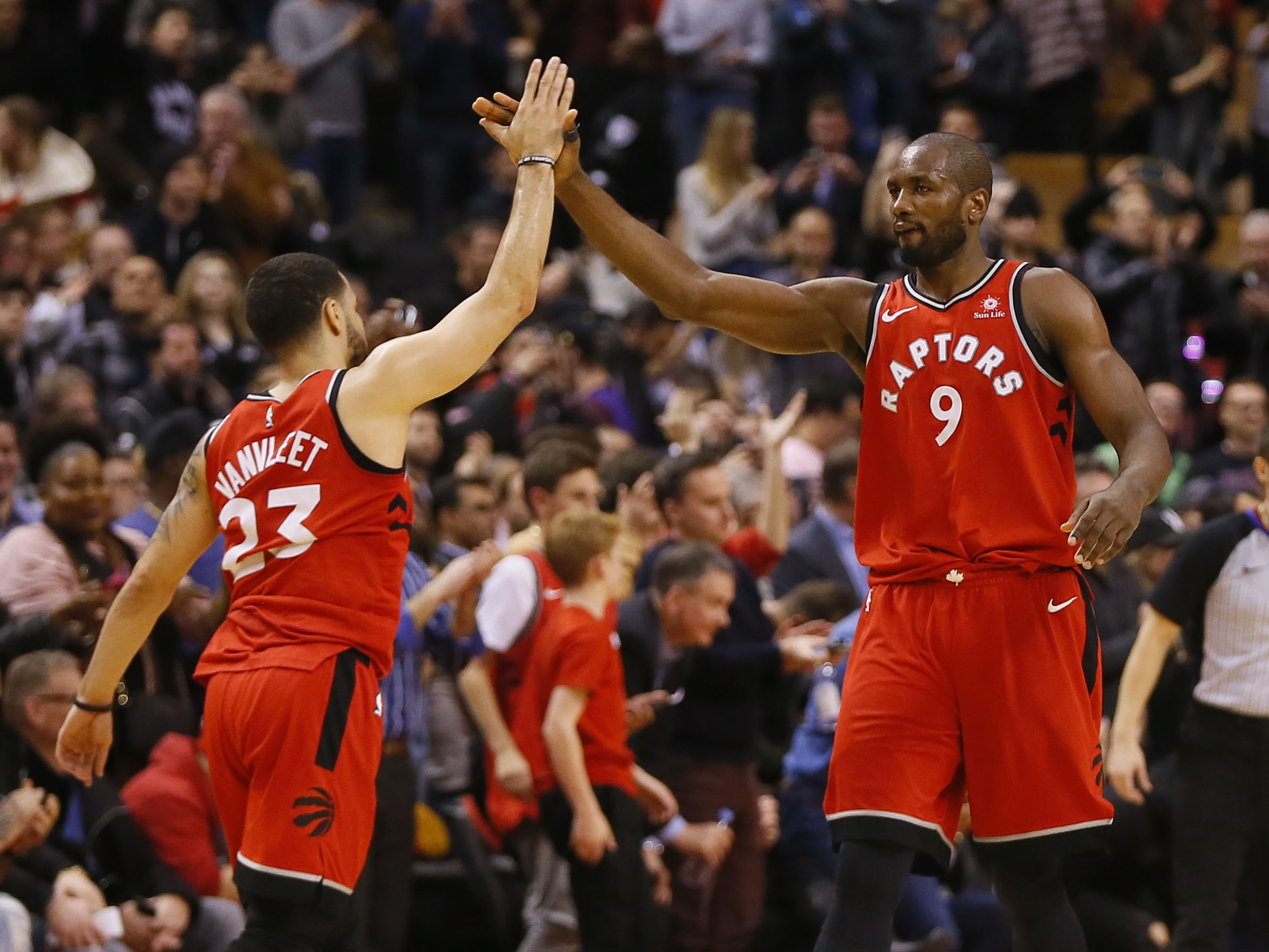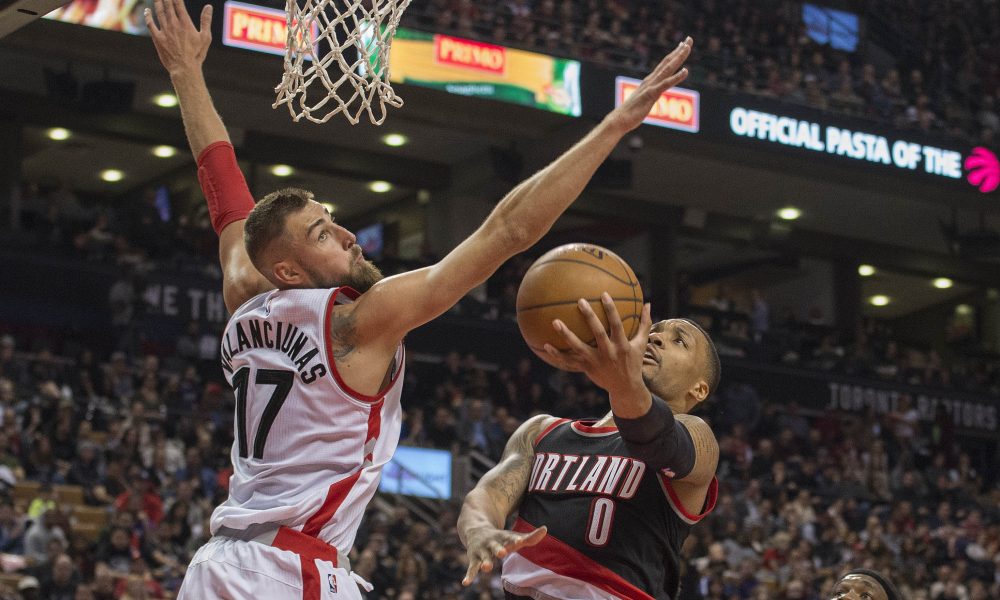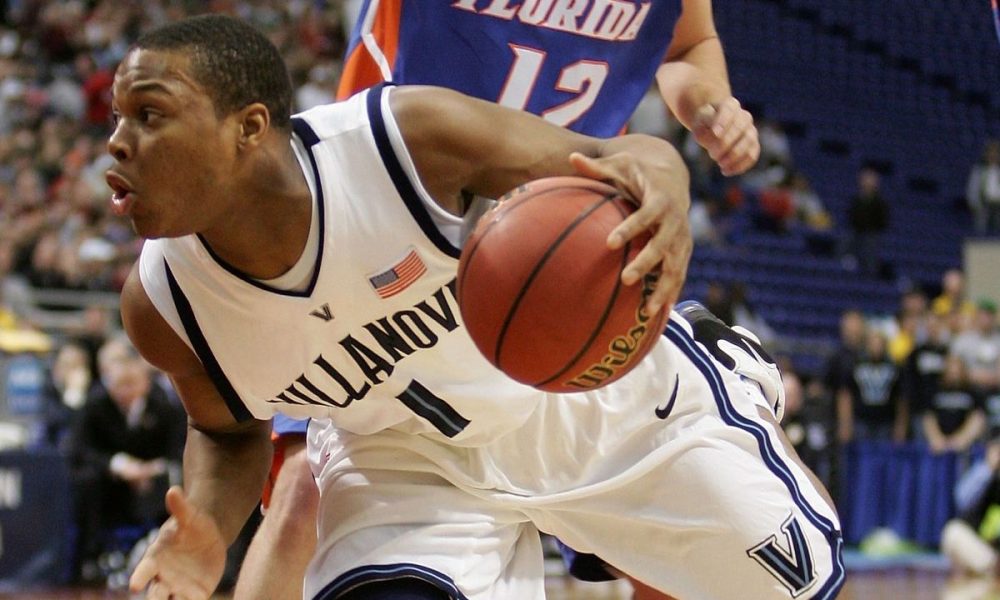The Raptors finally ran a diverse offence when it mattered most. In several games (Boston and Golden State come to mind most acidly), the team only isolated DeMar DeRozan against a defender or screened for him to isolate against a different defender. But on January 30th, the Raptors were able to beat Minnesota in the clutch by breaking the mold. What did they run? What were the most successful plays? Let’s break down each and every offensive moment.
Instead of starting clutch time at 5:00 remaining in the 4th quarter like the stats do, let’s begin instead at 6:00 remaining, as that’s when Casey subbed in his final closer, Jonas Valanciunas. Valanciunas was having a strong game – outplaying Karl-Anthony Towns – and he immediately contributed. Valanciunas ran a hand-off with Kyle Lowry, who drove and kicked the ball out to Serge Ibaka. Ibaka ran another hand-off with Lowry (ever in motion), who was able to drive middle, draw the defenders, and dump the ball in to Valanciunas on the block. The big man earned a layup.
The next play involved another attempt to feed the big man in the paint. Lowry snaked his way into the lane, forced his defender onto his back to draw attention, and kicked the ball out to DeRozan in the corner. DeRozan quickly swung the ball to Ibaka, who drove without hesitation. Ibaka had a good look to score, but instead of hoisting that little in-between one-handed floater he loves, he looked to thread a bounce pass to Valanciunas, who sealed his man in preparation for the rebound. The ball knocked of bounds, and the Raptors retained possession.
The inbound play was an awesome call from Dwane Casey. Lowry inbounded the ball to DeMar DeRozan and immediately sprinted through the paint out to behind the 3-point line. Fred VanVleet screened for Lowry to make the cut more believable, and this action drew defenders out of the paint. DeRozan meanwhile curled around a Valanciunas screen before the ball was even inbounded, and then he drove baseline, practically in Lowry’s footsteps, to receive a layup. He was fouled and made his free throws.
Up next in the half-court, Fred VanVleet punished a defence that was expecting the Raptors to go to its stars. He received the ball on a hand-off from Valanciunas, who lurked above the free throw line. His recent string of 3-point makes (or just a defensive mistake) meant that Towns was attached to Valanciunas’ hip instead of helping in the paint. On the weakside, Wiggins attached himself to Lowry above the arc, afraid of a 3. Taj Gibson attached himself to DeRozan in the weak corner, most likely trying to prevent the ball finding the team’s star, which Gibson assumed would occur. Instead, VanVleet found the paint entirely empty, so he just drove and scored.
Perhaps emboldened by his recent layup, VanVleet looked to drive immediately upon touching the ball next. He found no advantage, so he kicked the ball out to Lowry, who waited for a screen from Valanciunas. The big man rolled hard, and Lowry found him with a beautiful pocket pass. Valanciunas is terrific at keeping the ball away from defenders’ swiping hands, even as he gathered from quite a distance. He didn’t finish the ensuing reverse layup, but he’ll make this shot 8 or 9 times out of 10.
VanVleet remained the initiator of the offence on the next play. He drove away from a Valanciunas screen for 1-2 dribbles (just enough to get the defence’s attention) and then threw a jump-pass to DeRozan behind the arc. DeRozan immediately swung the ball to Ibaka, who pump-faked and drove without hesitation. He again found himself with a possible bounce-pass to the sealing Valanciunas in the paint, but this time he hoisted his pretty little floater. Bottoms.
In the next play, DeRozan was fouled before any offence could begin. He made his free throws.
With approximately 2 minutes remaining on the clock, the Raptors ran my favourite play of all. With VanVleet again handling up top, DeRozan curled around an off-ball screen from Valanciunas. The defence adapted and shrunk into the paint to prevent an easy pass to the cutting star, and VanVleet immediately threw the ball over to Valanciunas. He ran over to receive a hand-off, which Valanciunas declined. The big man instead passed the ball to Lowry and followed it to set a screen for the guard. With only a few passes, the team severely compromised the defence, forcing multiple side-to-side rotations. Lowry drove while Valanciunas simultaneously rolled, and Lowry beat his defender. Valanciunas’ defender was busy recovering, and Ibaka’s defender had to tag the roll, so DeRozan’s defender had to help in the paint all the way from the weak corner. Lowry found DeRozan wide open in the corner, but he missed the 3. The defence had rotated so much that Valanciunas had great offensive rebounding position, but he missed an easy put-back.
With the game truly coming down to the final few plays, DeRozan ran his first me-versus-the-world set. He curled around an off-ball Valanciunas screen, which didn’t force a switch. He then isolated against Jimmy Butler and hoisted a terrible layup attempt.
The last half-court play came with VanVleet again initiating the offence. He used a Valanciunas screen to drive, but he found no advantage, as Ibaka’s defender waited to foil any momentum (despite Ibaka himself drifting towards the other side of the court). VanVleet calmly backed the ball out and waited. When every defender returned to their men, VanVleet drove baseline again, and he kept his head up and dribble alive. When DeRozan timed his cut perfectly, VanVleet found him for an easy floater. This sealed the game.
There were 10 possessions in the final 6 minutes, all of them half-court sets against a solid Minnesota defence. Toronto scored 11 points, good for a points-per-possession mark of 1.10, which is far superior to their clutch scoring (excluding this game) of 0.99 points per possession. Furthermore, Toronto had 3 high-percentage looks (Valanciunas reverse layup, DeRozan open corner 3, followed by a Valanciunas put-back) that they missed, but which could have put even more points on the board.
7 of the team’s 11 clutch points were scored by not Lowry or DeRozan. Lowry was terrific leveraging his off-ball shooting to create open driving lanes, and Valanciunas was amazing at freeing players with his screening and drawing defenders with his rolling. VanVleet, in fact, was the team’s best initiator of the offence. Practically every good look (and 7 of the team’s 11 points, again), was created with VanVleet beginning with the ball. The only other points scored came from a set BLOB play with Lowry inbounding and from DeRozan free throws on a needless foul. VanVleet handling the ball allowed DeRozan and Lowry to leverage their talents in unexpected ways.
We see in several plays the value of playing against expectation. VanVleet earned himself a layup and a free throw simply because the Wolves assumed the ball would find Lowry or DeRozan. Defenders abandoned defensive principles (such as not helping off of DeRozan, who isn’t a world-beating 3-point threat) because they were certain they knew what was coming next. The offence looked impressive because Lowry and DeRozan threatened the defence both with and without the ball, freeing up space for every Raptor on the court to succeed at their job. Empowering each Raptor in the game has worked all season, and it finally worked in the final few minutes of a close game.
Of course, the Raptors ran a similar offence their very next game against Washington and lost. In 12 clutch possessions, they scored 14 points, or an efficient offence of 1.17 points per possession. The Washington game was bizarre in that 10 of their 14 clutch points were scored on possessions with 0 passes and mostly isolation play from their stars. They ran sets on several possessions and got open looks for shooters, especially Serge Ibaka, but the Raps’ shooters failed to connect. This will happen sometimes. The isolation game was opened up by the team running actual offensive plays, which meant the defence couldn’t only gameplan to stop the two stars. They thus had more room to work.
One inherent weakness in the offence was that VanVleet was unavailable (new daddy duties), so Powell closed in his spot for defence on Bradley Beal. Powell is a less capable playmaker, and the team was unwilling to allow him to initiate the offence. As a result, the stars played with the ball in their hands in the clutch from the get-go, instead of threatening the defence off-ball as well. Despite the successful offence (if not as aesthetically pleasing as against Minnesota), the Raptors lost due to poor defence and poor defensive rebounding. The game is won on both sides of the ball, but it’s a relief that the Raptors have now (mostly) trusted their new offensive principles in back-to-back games.




